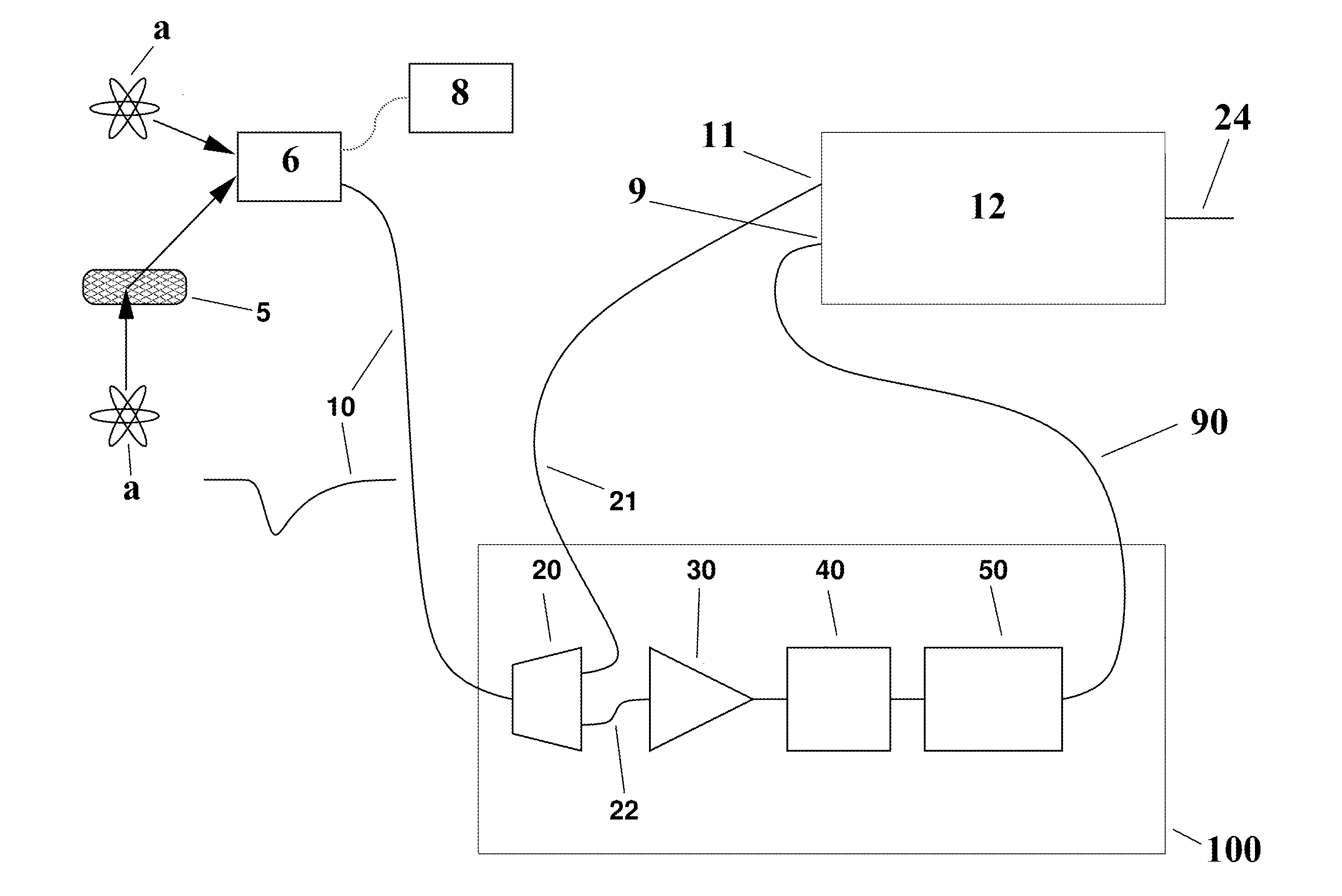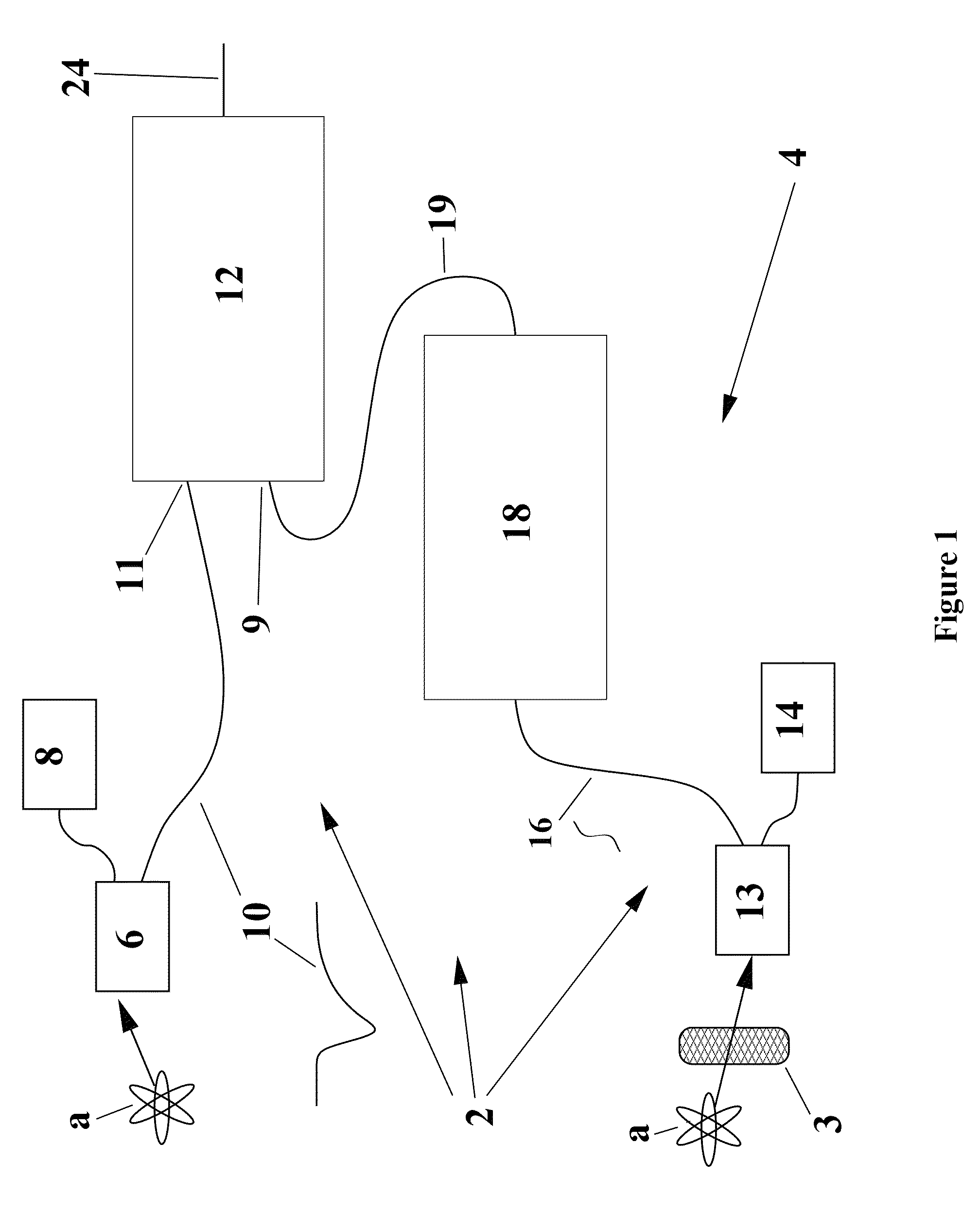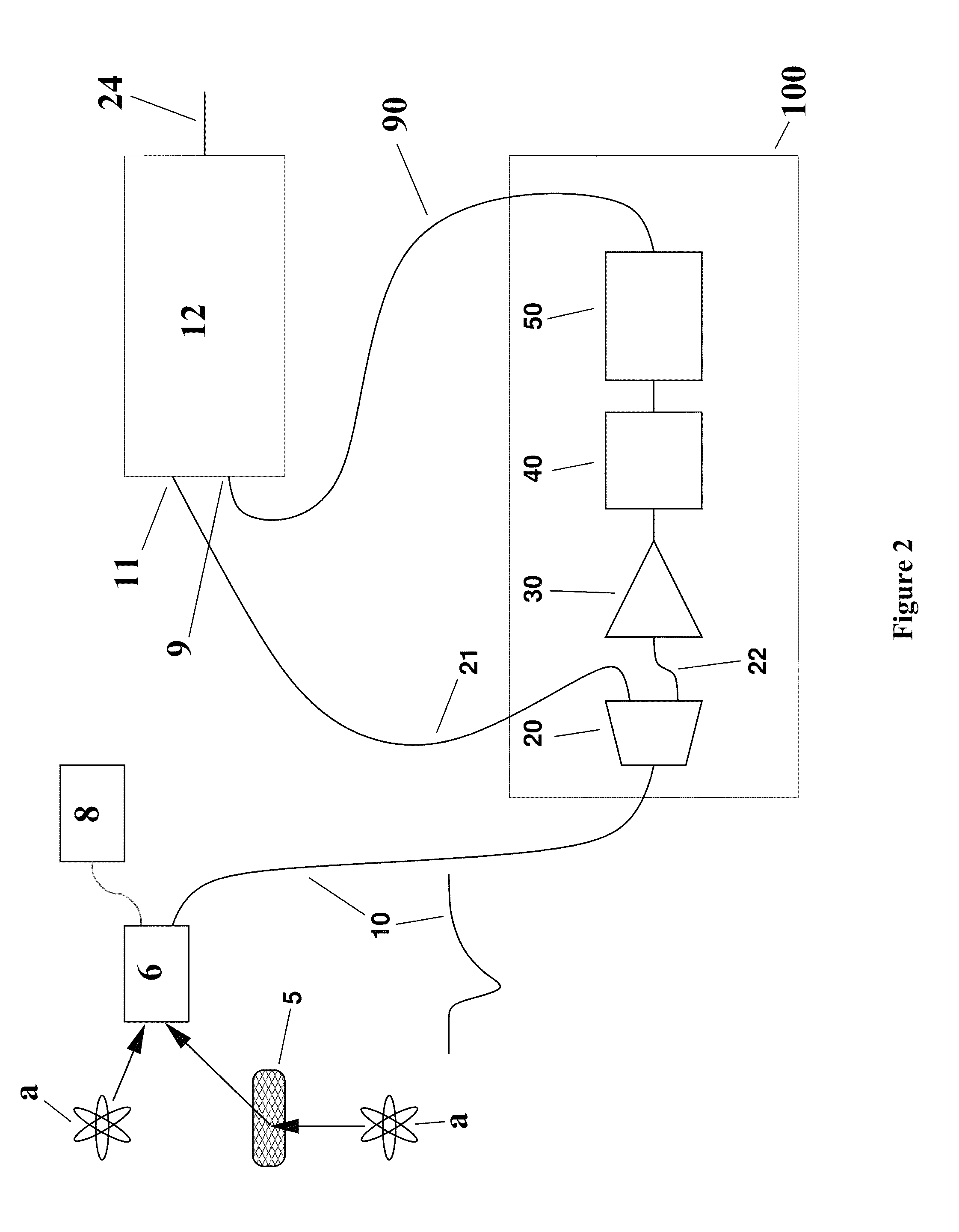Neutron detector attachment device
a technology of neutron detector and attachment device, which is applied in the field of spectrometers, can solve the problems of not having neutron detection capability, performance of most neutron detectors well below the theoretical limit, and the performance of most neutron detectors not performing optimally for intended us
- Summary
- Abstract
- Description
- Claims
- Application Information
AI Technical Summary
Benefits of technology
Problems solved by technology
Method used
Image
Examples
Embodiment Construction
[0025]Conventional gamma ray spectroscopy systems are comprised of a high voltage source that provides power to a means for detecting gamma rays emitted from a particular source of radiation. A gamma ray emitted from a source of nuclear decay is converted by the detector into an electrical analog pulse signal connected thereto. The analog pulse signal is typically first amplified in a pre-amplifier and then subsequently shaped in a shaping amplifier and stretched in a pulse stretcher. After the analog pulse signal is amplified, shaped, and stretched, it is converted into a digital signal by an analog to digital converter. The analog to digital converter (ADC) outputs an n-bit digital signal (e.g., a 12-bit digital signal) that represents the energy of the detected gamma ray. This is then counted in a binning scheme to produce a histogram, i.e. an energy spectrum of the incoming gamma rays.
[0026]The development of high-speed and high-performance analog-to-digital converters, i.e., th...
PUM
 Login to View More
Login to View More Abstract
Description
Claims
Application Information
 Login to View More
Login to View More - R&D
- Intellectual Property
- Life Sciences
- Materials
- Tech Scout
- Unparalleled Data Quality
- Higher Quality Content
- 60% Fewer Hallucinations
Browse by: Latest US Patents, China's latest patents, Technical Efficacy Thesaurus, Application Domain, Technology Topic, Popular Technical Reports.
© 2025 PatSnap. All rights reserved.Legal|Privacy policy|Modern Slavery Act Transparency Statement|Sitemap|About US| Contact US: help@patsnap.com



